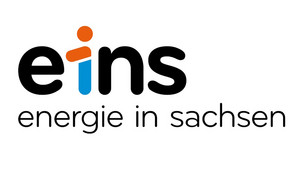Leiko Ikemura: Usagi Greeting (180)
Niederwiesa


The patinated bronze sculpture Usagi Greeting by the artist Leiko Ikemura, who was born in Tsu/Japan in 1951 and now lives in Berlin, is a pictorial-poetic encounter between the figure of the hare (Japanese Usagi) and representations of Buddhist bodhisattva beings and Christian iconography of mercy. The 180 cm high sculpture is the first realisation of this theme, which the artist has been working on again and again since 2002.
The concentrated facial expression of the figure, modelled with only a few raised and recessed areas, appears twice: on the front and on the back. It is emphasised by the vertical rabbit ears, which convey alertness. The two arms held in front of the upper body as if in prayer reflect a tapered opening in the bell-shaped lower part, reminiscent of the protective cloak of a Madonna. The opening provides a view of a small, perforated space inside the sculpture; translucent light creates a miniature firmament. The formal boundaries between human, animal and plant figures are fluid in the pictorial worlds of Ikemura, who was a successful painter in the 1980s. They are inspired by the religious symbols and creatures of Japan, with which the artist mixes and confronts the European understanding of nature and art.
The placement of Ikemura's Usagi Greeting in the courtyard of the baroque Lichtenwalde castle complex makes reference to the collections of Asian artefacts on display in the Schatzkammer Museum: Chinoiseries meet art and ritual artefacts from Nepal, Tibet, China and Japan. By contextualising her sculpture, the artist extends the museum presentation beyond the visual display value and exploratory observation to include the mysticism inscribed in the objects as well as their history. Ikemuras Usagi thus expands the Purple Path to include a content-related perspective: it leads the gaze from the European context to the cultures of East Asia.
Leiko Ikemura
Usagi Greeting (180)
In: Niederwiesa / OT Lichtenwalde
The artwork is on loan by the artist Leiko Ikemura.
Set up with the support of the Augustusburg/Scharfenstein/Lichtenwalde Schlossbetriebe gGmbH.
Address:
Lichtenwalde Castle & Park
Schlossallee 1
09577 Niederwiesa / OT Lichtenwalde
to the location on Google Maps
Until 31 March 2025: at weekends, during the Saxon school holidays and on public holidays from 10 am to 4 pm (last admission)
24 December closed / 1 January open from 11 a.m.
From 1 April to 2 November 2025: Tue-Sun from 10 am to 5 pm (last admission)













































